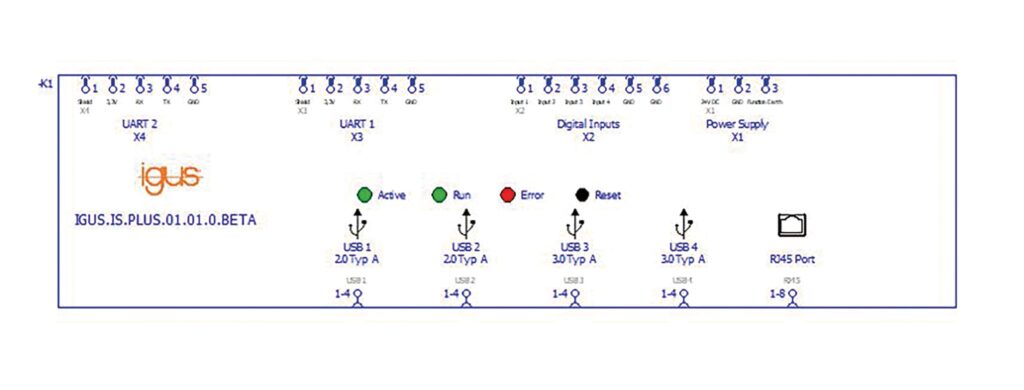Rethinking wire breakage safety: Identify cable problems early and prevent wire breakage with i.Sense CF.D
Richard Habering | 30. November 2022
Monday morning in a car factory: a robot is welding body parts together. Thanks to a seventh axis, it moves in a large work area, its data supplied with Ethernet cables. A technician opens the welding robot’s control cabinet to see whether all Ethernet cables are working correctly. But the i.Sense CF.D wire breakage safety sensor’s coloured signal lamps show that the transmission quality in one cable is weakening. Three different types of Ethernet cable are often used on the robot: a static cable from the control cabinet to the seventh-axis e-chain, a chainflex bus cable in the e-chain system, and a chainflex robot cable for torsional movement on the robot.
External influences can cause transmission quality malfunctions. But the cables are very long and difficult to reach in many places. “In such cases, searching for and fixing errors is often time-consuming and expensive,” says Richard Habering, Head of Business Unit smart plastics at igus, and he knows from experience. “So we developed a new function for the i.Sense CF.D monitoring module that is so far offered nowhere else in the world: an optical status display with precise information on the distance to the suspected fault location.”
Simply read the risk area from the OLED display
In classic control and regulation technology, wire breakage safety means that a control system recognises any wire breakage as a fault, so breakage causes no malfunction. The new i.Sense CF.D, on the other hand, continuously measures transmission properties and various electrical parameters over millions of cycles. The system thus not only detects data loss in real time, but also identifies the position of the stressed area of the cable very precisely. “This information, which appears directly on the module’s OLED display, enables users to identify the wire breakage risk area faster and in a more targeted manner than ever and immediately replace the cable for the segment in question without trial and error – and without additional tools or software costs.” i.Sense CF.D set-up is also very quick – just install the module in the control cabinet, connect the cables to be monitored, and start right away.

Predictive maintenance with the i.Cee module
Adding i.Cee to the system is also very easy. The multifunctional module is compact, takes up hardly any space in control cabinets and, like i.Sense CF.D, can be set up in just a few simple steps. A minor intervention allows automatic cable monitoring, fault management, and predictive maintenance planning via a digital control system. All live cable parameters – such as number of strokes and running performance in kilometres – can be aggregated on a dashboard. Technicians usually have only two options for servicing cables subject to heavy mechanical stress. They can be reactive, replacing cables when they are already defective, but this usually means unnecessarily long, expensive downtimes. Or, as a precautionary measure, they can replace cables at specific intervals, accepting the higher costs when cable service life is not exhausted.

i.Cee changes all that. If defined limits are exceeded, the system can automatically trigger an alarm or an emergency stop in the system. The connection diagram can be created automatically at any time via EPLAN. This prevents immense consequential damage or even total failures, which can cost tens of thousands of euros in automotive production or the crane industry, for example. The i.CEE module also automatically calculates the most economical time for maintenance operations and cable changes. “So it’s ideal for reducing both maintenance costs and downtime. A CF.D module pays for itself in a few months, and ROI is over 500 percent per year.”
